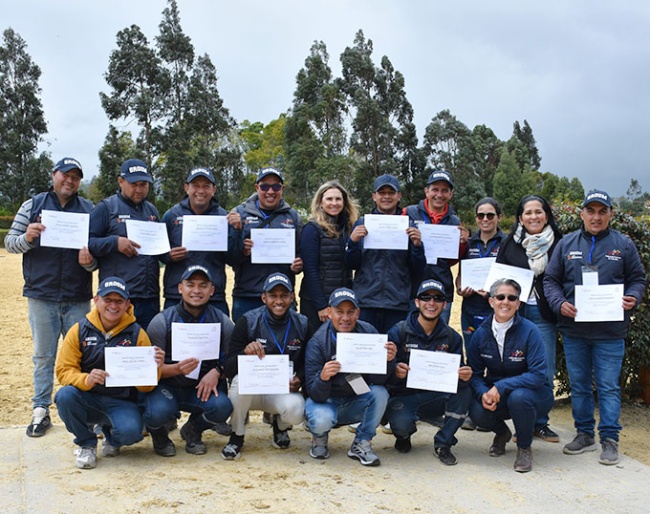
-- Text and Photos © Carmen Franco
Since returning to my home country, Colombia, I’ve been busy working in many areas, one being our National Equestrian Federation, in charge of the Development and Education Technical Committee. As you can imagine, there is a lot to do in ALL areas of our sport.
One of those areas or groups are the grooms. Our society has a very marked class difference between the many poor and the very few rich. Most of our grooms come from the first group, from countryside families that moved closer to cities to find a safer place to grow, as the rural areas became for a while too dangerous between the guerillas and the drug cartels businesses. Some grooms inherited their abilities and jobs from their relatives, some came to try their luck at something new. Some were able to graduate from school, some didn’t. Most of them are great human beings, dedicated, hard workers, and loyal.
Because of the need to educate each group of people involved in equestrian sports, the committees of every discipline suggest courses and clinics to hold during the next calendar year and as a suggestion from the members of the Development and Education committee, the Federation applies for FEI Solidarity courses. Last year we applied for the Grooms course and luckily, we got it.
Organizing the Course
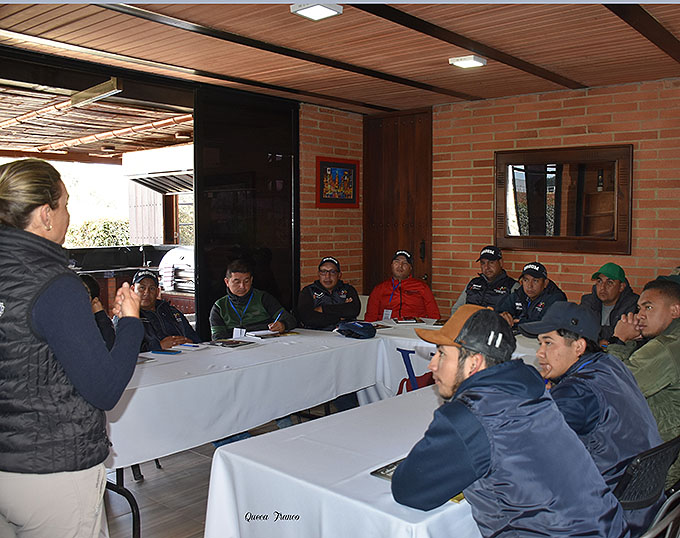
handling horses
I communicated with Valeria several times to prepare her trip to Colombia. She sent all the instructions and requirements, and we started working on publishing the form to enter the course. We got support from FEI Solidarity to do four different locations: two in the center of Colombia where we have the biggest concentration of sport horses, one in the state of Antioquia and one in the state of Valle. Each course could have up to 14 grooms registered. A few days after we published the registration form, we had all courses at full capacity and, by closing date, we went up to 108 grooms entered with more requesting to be in!
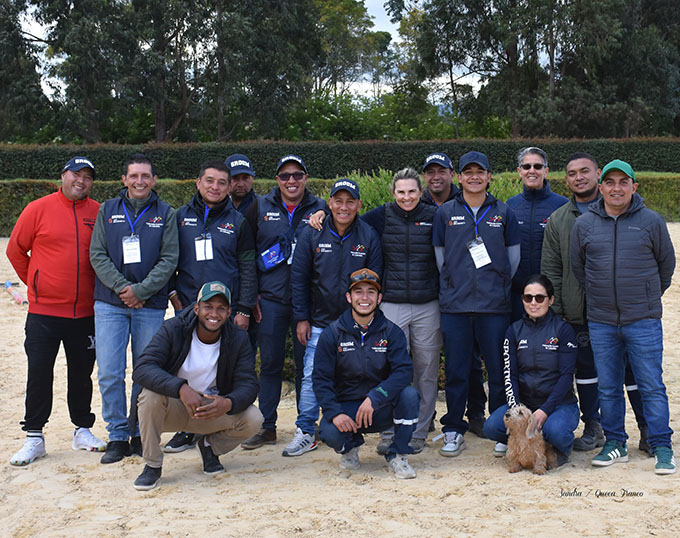
For each one of the locations, we had to have a tutor representing the Federation and helping with the organization. Besides that, the FEI decided it was time to prepare more tutors to be certified to continue spreading the knowledge inside the country and beyond. A total of 11 people signed up for this part, me being one of them as I was the tutor for VTP Sporthorses, the first location where we held the course.
Teaching Days
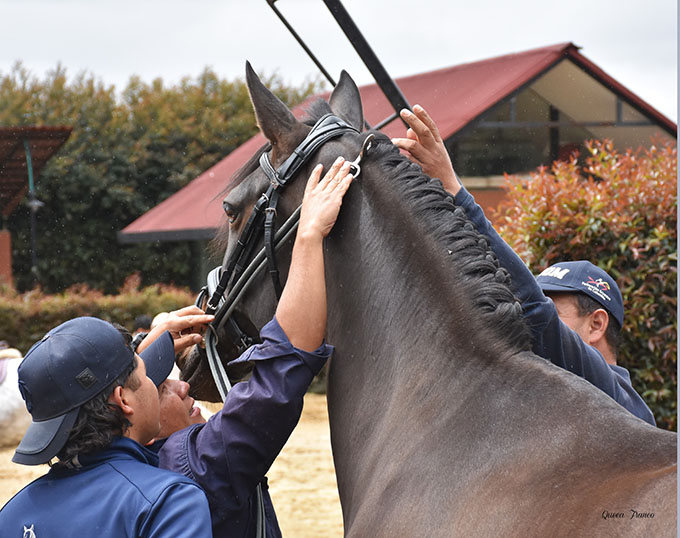
After a brief opening ceremony, day one at VTP Sporthorses started with the well-being of the horse, a subject that is the center of the course, not because they are words that seem to be in fashion lately, but because it is the true spirit to be imprinted in each one of us. Very quickly the grooms started realizing they were learning the reasons why to do the things they were taught without explanations. They saw examples of where the horses live and how they live can affect their performance in a very positive or negative way.
After the morning’s theory, the practice in the afternoon was about a tour of the facility with Valeria commentating on the good conditions of the stables and those that could be improved, followed by a very detailed session on how to tack up a dressage or jumping horse.
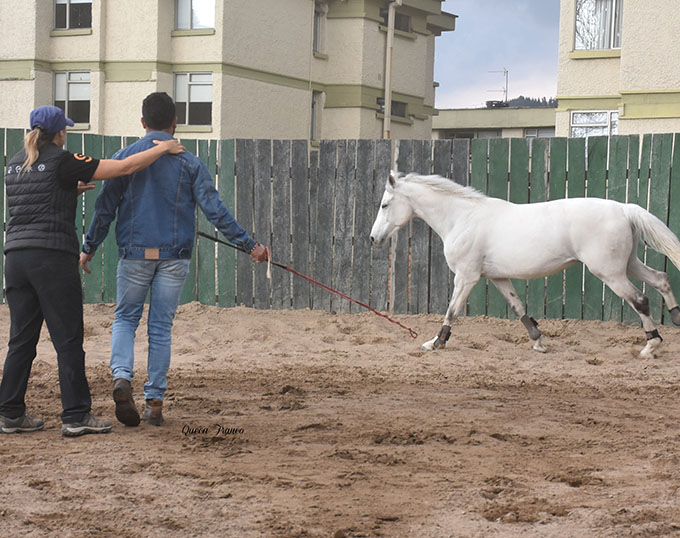
Day three was about the presentation of the sport horse. Both theory and practice sessions were very educational. Thanks to horses lent by different owners, they were able to practice braiding mane and tails. The more experienced grooms helped the other ones with braiding techniques.
Evaluation Day
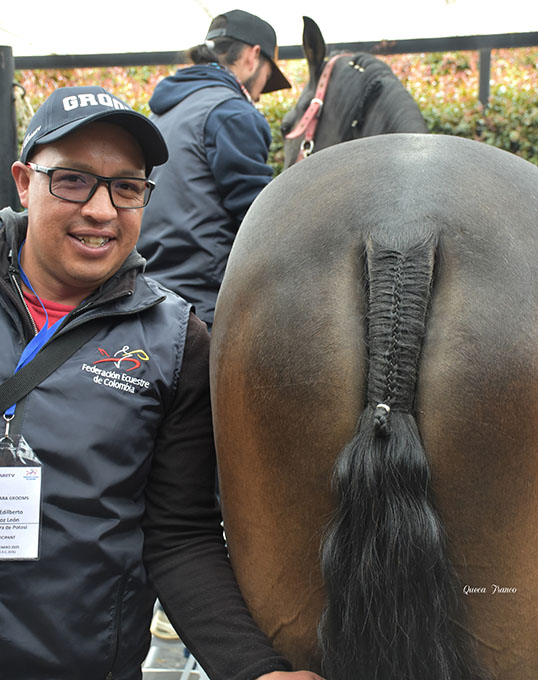
After a short parade to present the horses for pictures with their teams, we had a nice ceremony to give the attendance certificate and have lunch all together.
Without a doubt a very fulfilling experience for all of us, and I’m very grateful to Valeria, the FEI Solidarity team, the Federación Ecuestre de Colombia, the hosts of every location, the owners who allowed us to work with their horses, the Ligas, Alpina and all the sponsors who covered food, books and pens, and of course, the horses who let us learn from them. I’m sure the lives of many horses that accompany us in this beautiful sport will change, in a positive way, and those who are around them most of the time: the grooms.
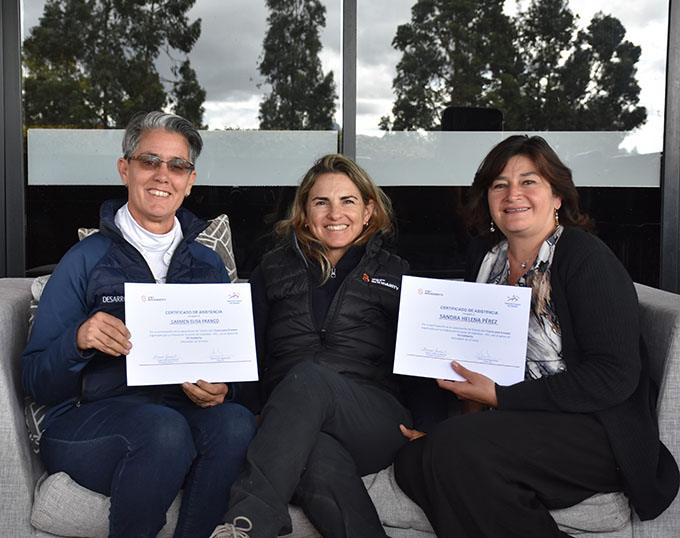
Learn more about FEI Solidarity here.
Related Links
FEI Launches New Reporting Mechanism to Amplify the Voice of Grooms
FEI Formally Recognises the International Grooms Association
New Grooms Working Group has first meeting with FEI President at HQ
Colombia Wins Team Gold at 2023 Central American and Caribbean Games
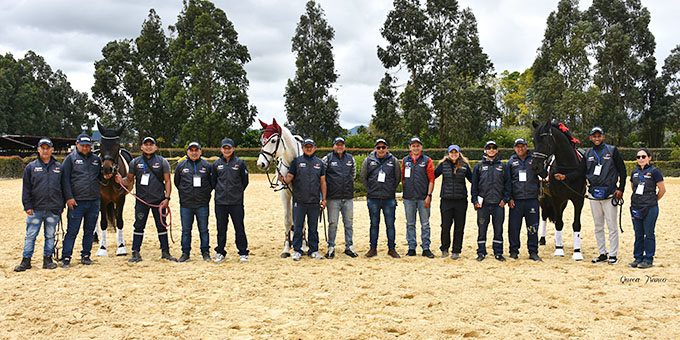
Successful presentation of the horses: grooming, braiding, handling